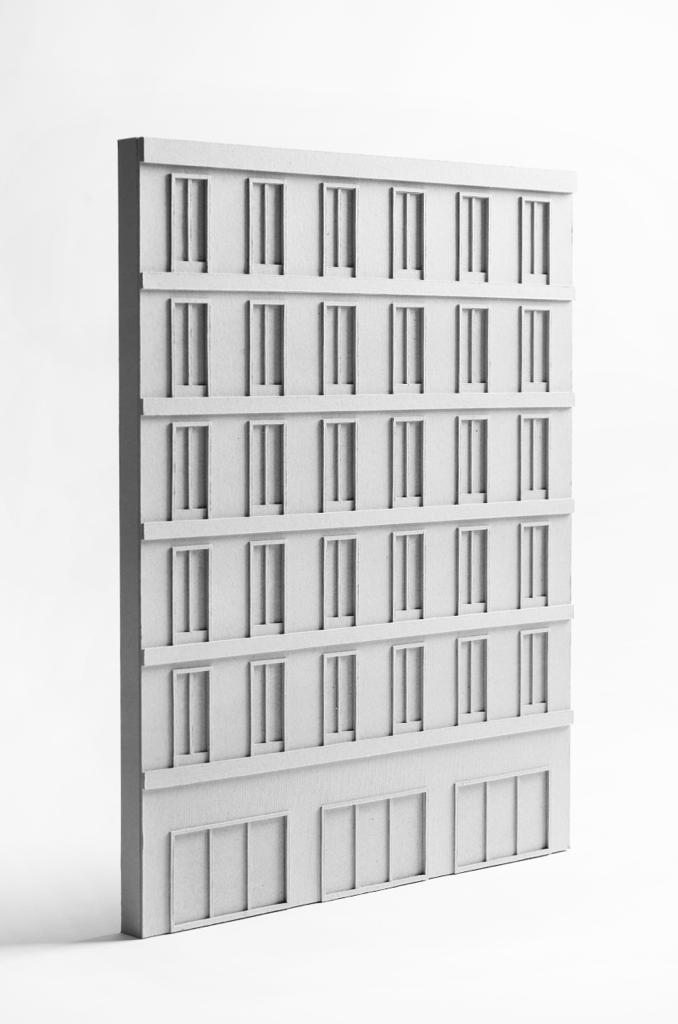Scale: 1:50
Material: 2mm Gray Cardboard
Machine: Zünd

A certain amount of abstraction and discretization is necessary to represent the details of a facade on a model scale. This example guides you through the required steps and exemplifies the description-making process. 2mm cardboard is equal to 10cm on a scale of 1:50. This is a reasonable starting point for the material thickness since many elements like window reveals, ledges, and other features typically present on a facade, fall into the range of the 10cm separation. A layered facade can, in principle, have as many elements as needed, but in practice, it is more common to divide it into the following layers:
As tempting as it might be, it is wise to consider precisely what type of detail needs to be shown in the model. Consider the model as a vehicle to communicate your ideas. In that function, the models converse with you and others. The clearer the model communicates, the better it is for the conversation, and you do not get lost in every tiny detail.